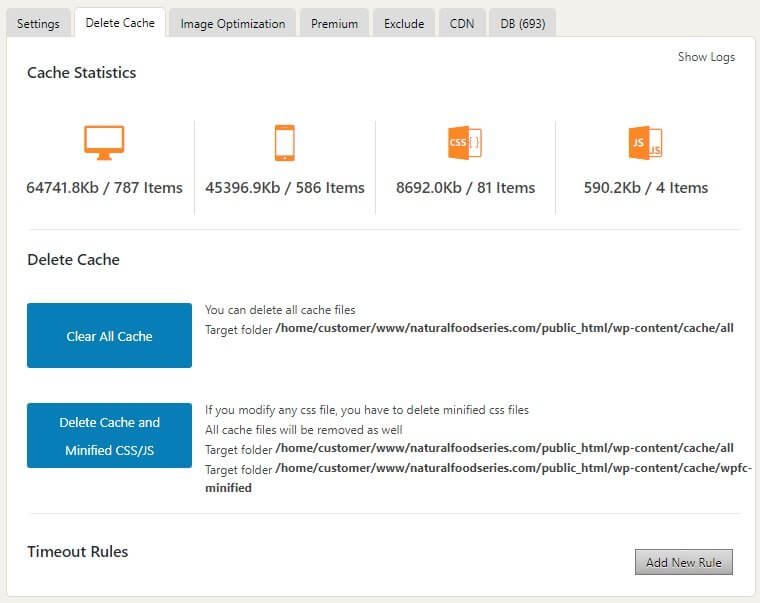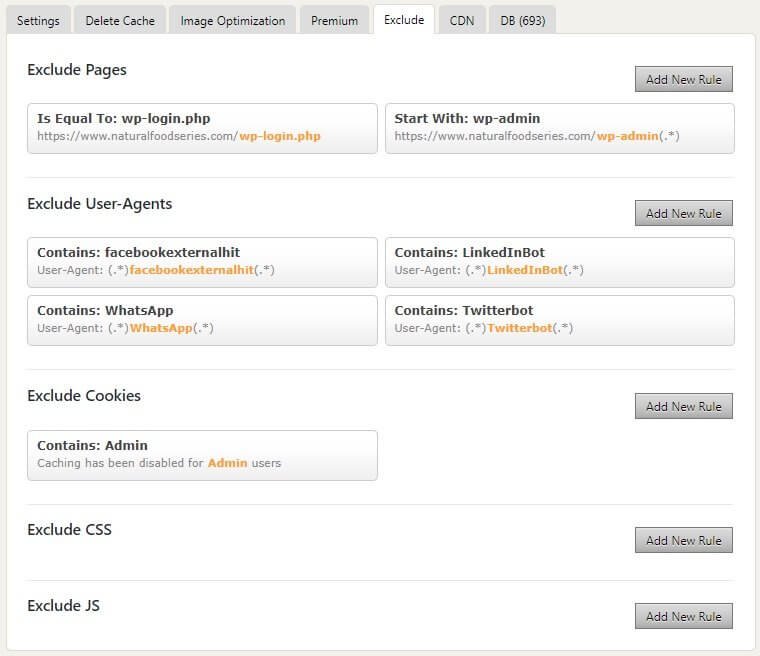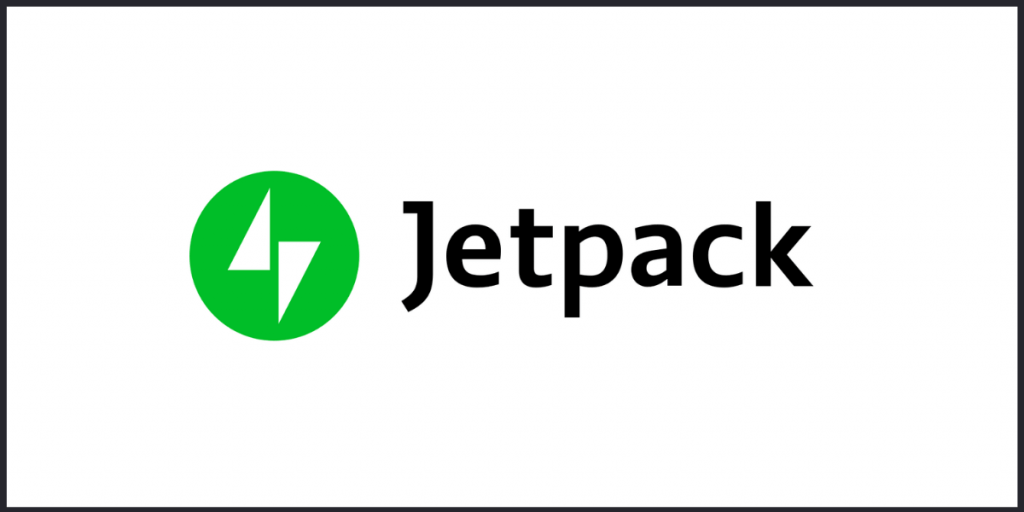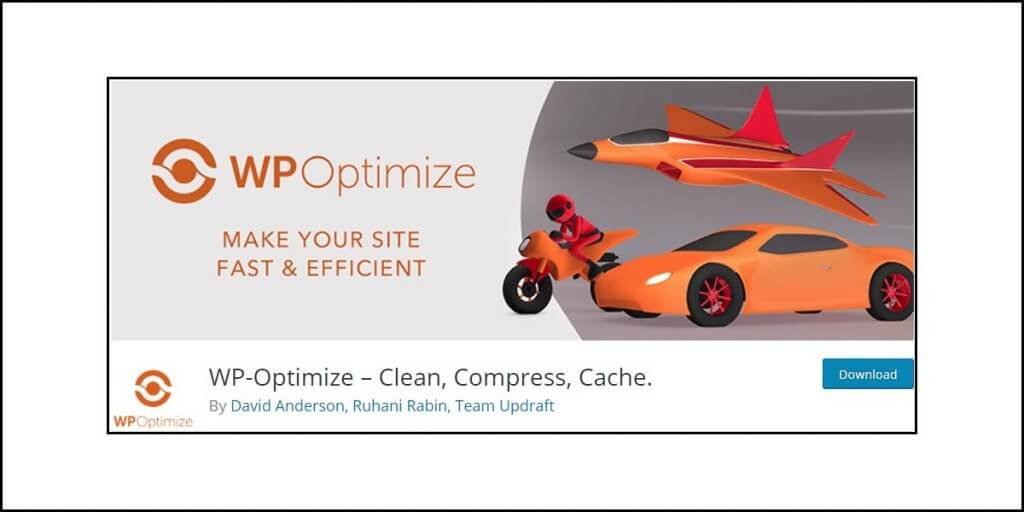What is WP Fastest Cache?
WP Fastest Cache is one of the most popular caching plugins available for WordPress users. It is a simple-to-use plugin with no complicated setup that can bog you down. There are both free and premium versions available. For those who cannot afford the premium version or the pro version, the free version works perfectly fine.
In this WP Fastest Cache review, we will be looking into the premium version of plugin and walk you through the entire setup process.
I will also give you the speed results achieved by using this plugin. Sounds good? Well, let’s start then!
Speed Test Results Using Google PageSpeed Insights
The one big issue that you need to address is the speed of your website. If your web pages are not loading fast, you need to make sure that they do.
Google doesn’t like slow websites.
There are many things that you can do to speed up your website. Two of those things include:
- Caching
- CDN
A caching cannot make your website super-fast. Yes, it can help to improve the speed. Depending on what type of website you have, the number of images, image dimensions, ads, scripts, fonts, etc., a caching plugin may be able to improve your website speed significantly or at least to a reasonable amount.
For further speed improvements, you need to use CDN, optimize your images, localize your fonts if you are using Google fonts, etc.
Essentially, the optimization steps you take will depend on what you have on your website. But caching is essential, and so is a CDN
I used WP Fastest Cache on a massive website with hundreds of posts, images, scripts, etc. Here are the test results with a CDN:
Speed on mobile:

That’s quite impressive considering that the website is pretty large, and that it came into existence before Google announced the core web vitals. Since the website started long before core web vitals were introduced, appropriate optimizations are absent.
Still, even with such a setup, the website performed exceptionally well without a CDN.
Speed on desktop:

Again, that’s a very impressive speed without CDN.
So yes, WP Fastest Cache is quite impressive and you can further improve your website speed using a good CDN like Cloudflare, or StackPath CDN, or Bunny CDN.
WP Fastest Cache Setup and Walkthrough
Setting up WP Fastest Cache is simple. You first need to install it from the WordPress plugins repository. You can find the free version in the plugins’ repository. In case you want to purchase the premium version, you will find purchase options from within the plugin.
Once you install the plugin, activate it. After you activate the plugin, you can access the plugin from WordPress dashboard >> WP Fastest Cache.

Once you click on the option, you will be greeted with the main settings window, which looks like this:

You will notice that there are seven tabs in total and the primary tab is the settings tab where you can enable a wide range of options to speed up your website.
The Settings Tab
Let’s go through each option in the Settings tab in details:
Cache System: Yes, you need to enable this, because that’s what you are trying to achieve!
Widget Cache: If you have too many widgets on your website, you should enable this option. However, remember that if you are using special CSS codes for running network-specific ads, you need to disable this option as it may mess with the ads.
Preload: It simply means automatic generation of cache files whenever your existing cache is cleared. You may manually clear the cache, your website’s cache may clear up whenever you are updating a post or page. Preloading ensures that fresh cache files are always available for your website visitors. Make sure that you are activating this option.
Logged-In Users: If you disable this, Fastest Cache will show cached content for logged in users. This is not a desirable thing to do if you don’t have a website that shows different content to different users. So, check this option and make sure that it is not showing cached content to logged in users unless you need something else.
Mobile: You should never show cached desktop versions of your website on mobile devices. That will lead to poor user experience. So, check this option!
Mobile Theme: In all likelihood, you are using a responsive theme. If you have a responsive theme, you don’t need to create cache for a mobile theme. You will need this only and only when you have a mobile-specific theme showing up on mobile devices.
New Post: Whenever a new post or a new page is published, you should clear the cache for your website. So, check this option.
Update Post: Whenever you update a particular post or a page, clear the cache of that particular page or post. You don’t have to clear cache for the entire site. That’s meaningless.
Minify HTML & Minify HTML Plus: You should enable both of these options. For free users, the Plus option is not available. When you enable these two options, you will essentially be removing comments and whitespaces from the HTML files. This will, in turn, reduce the size of your HTML files, and hence, reduce the overall page size. As a result, the webpage speed will increase.
Minify CSS and Minify CSS Plus: Same as HTML minification, these options will eliminate white spaces and comments from your CSS files and reduce their size. Yes, you guess it right, the Plus option is not available with the free version.
Combine CSS: Be very careful with this one. Combining CSS can break the function of your website, or even its design. You may come across people stating that combining CSS will do two things – reduce HTTP requests, and make your website fast. Yes, they are right! What they forget to tell is that if you are using HTTP/2, combining CSS doesn’t make much of a difference, and, combining CSS can actually lead to FOUC or flash of unstyled content. Deferring CSS will definitely cause FOUC in about 90% of the case.
So, if you are using this feature, make sure that you are testing your website thoroughly. Do not use the normal browser window to test. Use the incognito mode to mimic a real-word scenario as much as possible.
Minify JS: You can happily turn this on! Doing so will only reduce the size of your JS files without impacting their functions. Only the comments and white spaces that are not needed for a JS file to function properly are removed.
Combine JS: This will combine the JS files in the header segment (<head> </head>) of your website. The idea here is to minimize the number of HTTP requests. As before, if you are using HTTP/2 protocol, you shouldn’t be bothered about this. However, if you are turning this on, make sure that your site is not broken. If your site breaks, or some of its functions break, it is better you turn this off.
Combine JS Plus: Not available for the free version, this option will combine the JS files in the footer segment of your website. This is safe to turn on. You can do that!
Gzip: If you are already using Cloudflare premium that offers Brotli compression, you need not worry about this feature. However, if you are not using Cloudflare, you should enable this option. It will compress the files that your server sends to a user’s browser. This fastens up the delivery of your website.
Browser Caching: This feature will instruct the browser to store cached files of your website so that it doesn’t have to download everything again and again, thereby reducing the load times for the repeat visitors.
Disable Emojis: Yes, enable this. This only increases the webpage load time because the browser needs to render a specific JS file called wp-emoji-release.min.js. Anyway, new and modern browsers all have emoji support. You can safely disable this.
Render Blocking JS: Removing render blocking JS might not always be a good idea. So, make sure that you are testing your website thoroughly after enabling this option. If enabling this option breaks the functionality of your site, do not enable this. There will be some JavaScript files that will be needed for properly rendering your website (depending on the theme or plugins you are using). Blocking them from rendering will break your site.
Google Fonts: First thing first, you should not be using Google fonts! They are called from external servers, slowing down your website. If you want to use Google fonts, the best thing to do is to download the fonts and then upload them to your server and call them from your server. This will treat the fonts as system fonts instead of Google fonts.
In case you are not technically inclined, you can always use a plugin called Optimize My Google Fonts or OMGF. It will store the Google fonts locally and serve them from your server instead of Google server.
If you don’t want to use this plugin, you can load Google fonts asynchronously. This means there will be a visible change in font rendering after the website finishes loading. Once the website loading is complete, the system fonts will be swapped with Google fonts. The visible change in fonts appears during this swapping.
Lazy Load: Yes, yes! You should be lazy-loading your images and iframes. This means that images will not load until a visitor scrolls down to the position of the viewport where the image or the iframe has to load.
The Delete Cache Tab

Yes, it is about exactly what the name suggests. You can manually clear the cache files from here. You will have two options – either to delete all cache, or delete all cache and minified CSS and JS files.
You should be using the second option only and only when you make modifications to your CSS files.
You can also add timeout rules in which you can define the time when the cache will be automatically cleared under different circumstances.
The Image Optimization Tab

On this tab, you can perform one-click optimization of all your JPG and PNG images. There are no options to fiddle with. You cannot select the type of compression you want or the level of compression.
This is a credit-based system in which you have to buy credits for optimizing your images. Once you run out of the credits, you can buy more!
The Premium Tab

There is nothing here on this tab expect for the option of purchasing the premium version. It will also show you the features you get with the premium version.
If there are any updates available, you can download the updates from this tab.
The Exclude Tab

This is where you can set rules for the pages that should be excluded from caching. You can also exclude user agents and cookies from caching. Furthermore, if you want to exclude certain CSS and JS files from minification and caching, you can do that as well. You need to set different rules.
The CDN Tab

This is where you can integrate different CDNs with your caching system. The three clear choices are StackPath CDN, Photon CDN, and Cloudflare CDN. If you are not using any of these, you can select the fourth option that will allow you to integrate just about any other CDN you want.
The DB Tab

This is where you can run one-click optimizations for your database. You can individually remove trashed content, trashed and spam comments, pingbacks and trackbacks, expired transients, and post revisions. If you want, you can clean all of them by clicking on the All option.
I will recommend that you backup your database before running optimization. Once you run the optimization, there is no way you can get back the previous database. There is no roll-back option.
What’s Not Right with WP Fastest Cache?
I will say that WP Fastest Cache is for rookies. It is not meant for those who want more granular control. For them, options like WP Rocket, LiteSpeed Cache, W3 Total Cache, etc. should be perfectly fine.
There are several things missing in WP Fastest Cache, making a premium purchase not really a good idea. Here are the things that are missing with WP Fastest Cache:
- There is no ability to localize Google Analytics.
- There is no ability to preload or prefetch DNS for external services.
- There is no option of preloading based on sitemap.
- Heartbeat control which deals with the admin-ajax.php file. This file can sometimes eat up a lot of CPU and slow down the website. Ability to control the way it works is always a desired option.
- Image optimization misses the ability to deliver WebP images. This is the image format the Google is pushing for, and you should implement it.
- It doesn’t allow to set or add missing image dimensions. Missing image dimensions can lead to CLS issue.
- It doesn’t allow to choose between lossy or lossless compression, and you will not get the option of choosing the degree of compression.
You can feel the heat because of these missing features!
Should You Use WP Fastest Cache?
Yes, you can use WP Fastest Cache, but whether you should use it or not is your choice. It is a cute little plugin that does an impressive job. But when it comes to advanced controls, WP Fastest Cache is still in its embryonic stage when compared to options like W3 Total Cache, LiteSpeed Cache, WP Rocket, etc.
If you are investing in a premium caching plugin, I will recommend that you go for WP Rocket. But if you are going for a free option, WP Fastest Cache is good enough for small websites with a few images. If you have a very large and complex website, you should avoid WP Fastest Cache.

